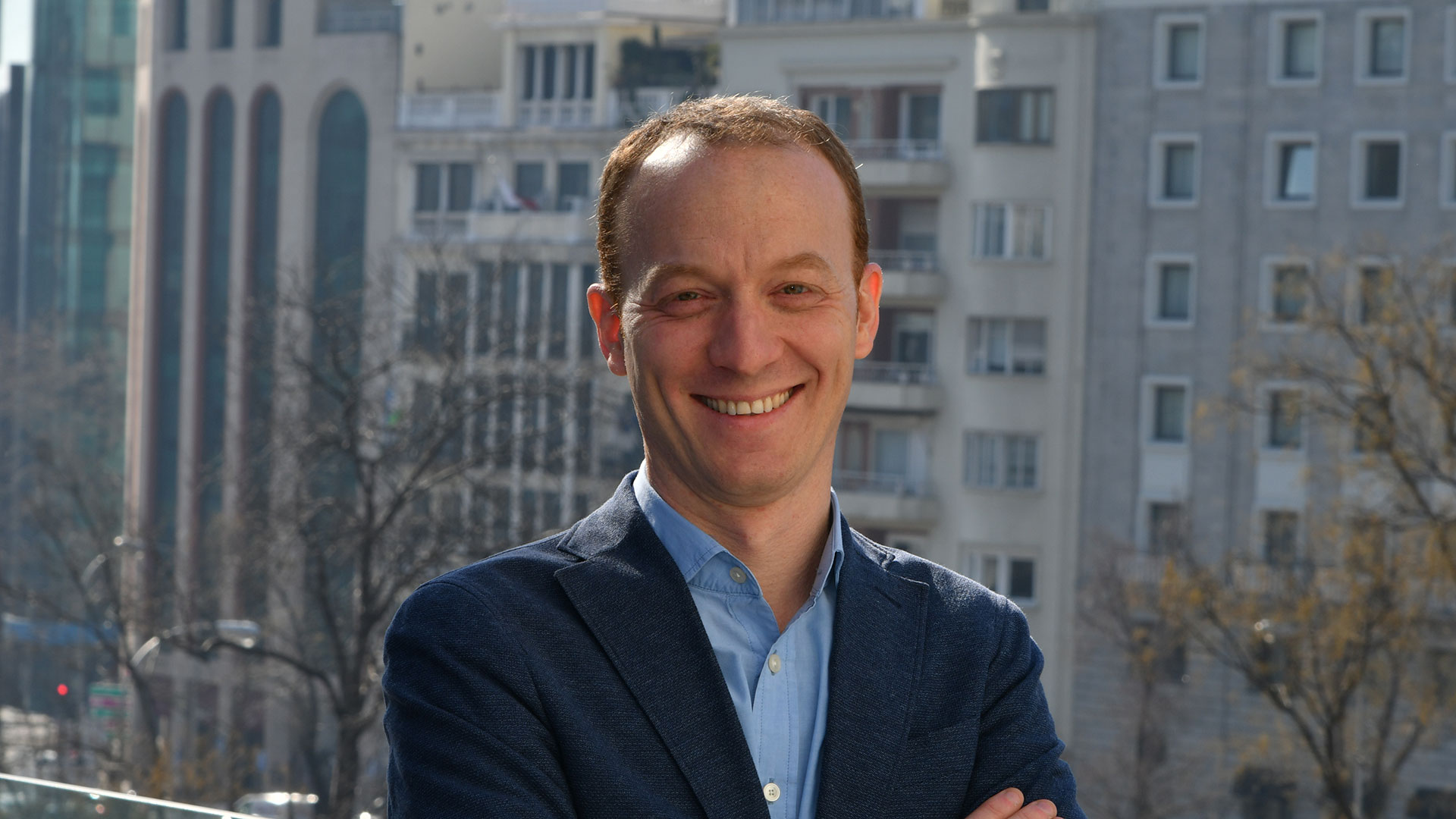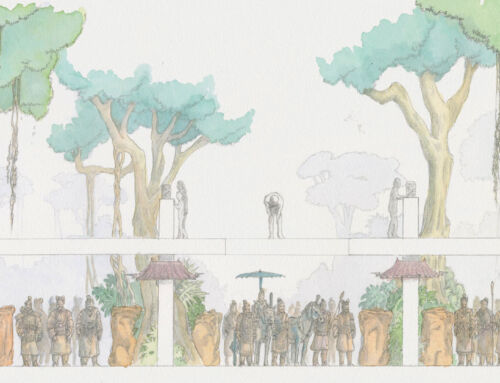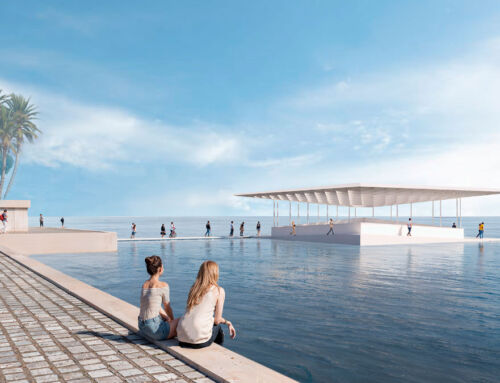After lengthy studies, Nicolas Cousin began his career at the Puy du Fou park in France, before moving into hotel management and then into the leisure strategy of well-known shopping centres. He also devoted part of his efforts to consultancy, a discipline that helped him to contribute to the development of tourism in Morocco and which has led to his recent appointment as director of consulting at Christie+Co. In this interview, he tells us about his experience in the different “sub-sectors of the tourism value chain”.
Amusement Logic: You started with a lengthy training in management, in the hospitality sector. What made you choose this profession?
Nicolas Cousin: Well, the truth is that it was a very easy decision for me: I have always had a passion for hotels. As a child, we often went on holiday to the Côte d’Azur and I loved walking in front of its fabulous Palaces. I was also an absolute fan of restaurants; in fact, as a teenager, I didn’t ask my parents for presents, I asked them to take me out to eat in great restaurants (I must admit that gastronomy had a very important place in my family). So, at the age of 15, I started studying hotel management, finishing my studies about 10 years later. Thanks to the internship system in place in France (which is quite similar in many countries), I had the opportunity to broaden my horizons and discover more sub-sectors of the tourism value chain, and so I realised that the options were simply amazing in the world of hospitality and tourism.
A.L.: One of your first jobs was at the Grand Parc du Puy du Fou theme park in France, where you got to perform. What was that experience like?
N.C.: Yes, in fact, to validate my master’s degree, I had to do a 7-month internship. I then joined the Grand Parc du Puy du Fou, in Vendée (France), where I managed the catering points in one of the park’s areas. It was an incredible experience as I arrived before the start of the season and was involved in all the preparation of the park to welcome visitors. I then realised the variety of professional bodies present in a theme park: cooks, architects, painters, veterinarians, actors, technicians and a long etcetera. For those who don’t know Puy du Fou, I can only tell you that it is an extraordinary park and that, moreover, the team becomes like a family, as everyone knows each other and many participate as volunteers in the evening show, which shows their commitment to the park and what it represents.
I was impressed by this experience and it has taught me a lot, but if I had to highlight 2 points in particular, it would be the attention to detail and the excellence of the visitor experience. When you walk through one of the villages in this park, you have to feel transported back in time and nothing is left unstudied. On the other hand, in a theme park, either you propose a truly exceptional experience or you have every chance of failing, because your competitors are not only other theme parks, but any site or activity that attempts to capture visitors’ free time (shopping malls, tourist villages, football stadiums, video games, etc.).
A.L.: You then moved on to different positions in the management of hotel chains such as Kyriad and Novotel. What was this period like?
N.C.: After the experience at Puy du Fou, I had the opportunity to join the Louvre Hotel group, where I was assistant manager in one of their hotels. It was an excellent opportunity for me to get closer to my childhood dream and to actively participate in the management of a hotel and to take on more responsibility. It was a very rewarding experience that gave me a lot, but then I realised that I needed to go a step further and I enrolled in an MBA (Master in Business Administration) to keep growing and open myself to new opportunities. After 2 intense years of studying my MBA, I oriented my career towards the consultancy sector for the tourism industry. I had the opportunity to assist various players in the tourism sector for more than 9 years: hotels, theme and water parks, investment funds, developers, governments… I was also involved in the development of Morocco’s tourism development plan (Vision 2020), in the repositioning of several resorts, in the feasibility study of theme parks or in the acquisition process of one of the most important amusement park operators in the world. I then joined Hotelbeds (the world’s largest bedbank), where I was lucky enough to see from the inside how the online distribution sector works, and to participate in a team integration process, following a merger between the 3 main players in the sector, (Hotelbeds, GTA and Tourico).
A.L.: You then moved to Intu España, the group that owns and operates shopping centres.
N.C.: Yes, one day I was approached to join the Intu group, which was developing very successfully in Spain. To be honest, I hesitated before accepting the challenge as I had never thought of working in the shopping centre sector. But then, talking to the person who was going to be my superior and who had held, some years before, the position of general manager at Port Aventura, I decided to take the leap. In fact, Intu’s objective was to turn the shopping centres into resorts where visitors would find a much more developed leisure and F&B (Food & Beverage) offer than in the competition and with a very complete calendar of events to generate multiple occasions to visit. Intu also had development projects underway to create new-generation resorts with a unique mix of leisure, retail and F&B. So I joined Intu and was responsible for defining the leisure and F&B profile we wanted to implement in each centre.
An important part of this work was to identify leisure concepts that could be successful in a shopping centre environment. I was also responsible for defining the strategic plan for Madrid SnowZone, the only indoor ski slope in Spain and one of the 10 that receives the most visitors annually (incredible as it may seem). One of the major milestones in recent years has been the improvement of the facilities, which had not been refurbished since its opening in 2003. During this refurb, a lot of work has been done to improve the quality of the facilities, both on the slope and in what we call the hot areas. The truth is that the result is spectacular, and even more so with the works that have been undertaken to “open” the slope to the Xanadu food court.
A.L.: What does Madrid SnowZone bring to the Xanadú shopping centre?
N.C.: This is an excellent question. Sometimes, in the shopping centre sector, the impact of leisure facilities is questioned (fortunately, less and less), but at Xanadu we have been able to study and document the impact of the ski slope. Obviously, in terms of media, it has an enormous weight with many events and reports. But in terms of footfall, we found that SnowZone customers did not come from the same geographical areas as the rest of the shopping centre. To simplify, a significant proportion of Xanadu’s visitors come from nearby areas (within a radius of 20 to 25 km), whereas SnowZone’s customers come mostly from the north and west of Madrid (areas with higher purchasing power). This shows that a well thought-out and well-executed leisure proposal attracts customers other than the shopping centre’s usual target customer and is a unique opportunity to reposition certain assets.
A.L.: What criteria are used to establish the leisure strategy of large stores such as Intu?
N.C.: To establish this strategy, an extensive study of the market is carried out: internal analysis (offer of the centre, clients…) and external analysis (competitors, suppliers, trends…) and an objective positioning is defined that is also in line with the values of the company and the resort. We then look at the market to see who are the players who can help us achieve our objectives. The important thing is to differentiate ourselves and to go for concepts with a high reception capacity, because in shopping centres the influx is concentrated at very specific times: we must ensure that we have the necessary capacity to welcome customers at these times and that we have a concept that allows us to operate in milder conditions, without deteriorating the experience at times when the influx is lower, in other words, the squaring of the circle!
A.L.: How do you see the future of the retail sector?
N.C.: There is a consensus in the market that the best centres will survive and even grow stronger. There is a trend among the big retail brands to reduce the number of shops in order to concentrate efforts on a few “flagships”. Hence the importance for operators to have the best concepts and the best brands in their centres.
In the leisure field, we see that the usual concepts are being enriched in terms of content, thanks to the contribution of technology (trampolining for example already includes a lot of augmented or virtual reality), and this movement will become stronger and stronger: this also allows to expand the target of these centres to other audiences.
I also imagine that within a few years we will see the first centres dedicated to E-Sport appearing in Spain, although perhaps not as big as the Virtuocity in Doha. This type of facility allows us to position ourselves in the towards future shopping centre customers and can also be an argument when planning the next family outing to the shopping centre.






